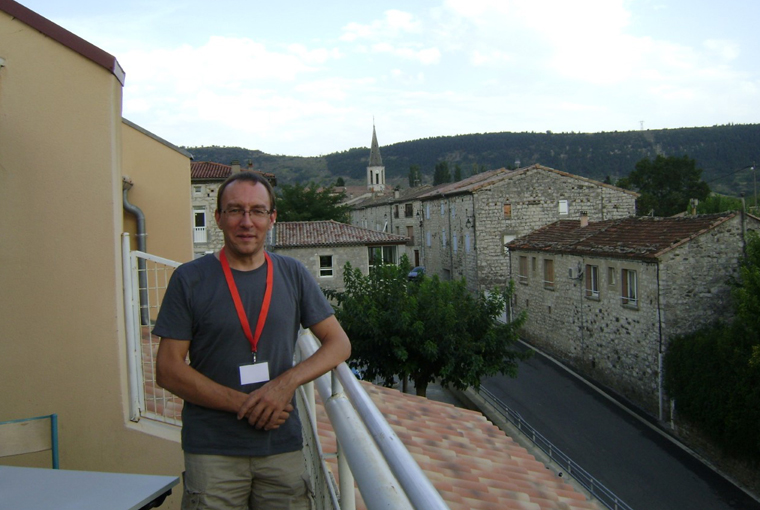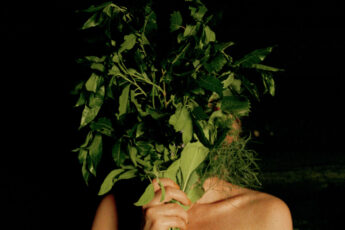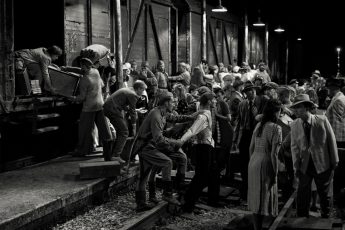
We met Kees Bakker, programmer of the Lussas Film Festival, at the Les états généraux du film documentaire documentary festival in Lussas (France). Bakker was invited to the festival to present the Doc History: Baltic Countries section, in which various influential documentaries from the region screened…
Tell us a little about your work and career.
I’m a professional spectator! Well, not really, I’ve been the director of a cinematheque in Perpignan, Jean-Vigo, for seven years. It’s a cinemathque, it’s a festival and it’s also a program. Throughout the year we hold exhibitions and release publications of books and magazines. We have a lot of activities to do with cinema and cinema history.
A bit about my life: I studied philosophy and cinema history. Then I worked at the Joris Ivens Foundation in the Netherlands, because I’m originally Dutch. Then, since I had always wanted to live in France, I found a job as a researcher at the Conseil de l’Europe, specifically at the Observatoire Europeen de l’Audiovisuel. Then via a stop-over in Bordeaux I found myself working in Perpignan.
What are you doing in Lussas?
I’m here in Lussas to work on the programming of the Histoire du Doc section, about documentary history. This year it’s about the Baltic countries. In 2009 I concentrated on Romania and in 2011 I studied Czechoslovakia.
What differences do you see between documentaries from Romania and Czechoslovakia and the Baltic countries ?
I mostly found parallels. These countries were all under the influence of the Soviets. So it’s a dictatorial regime and everything that goes with that: censorship, artistic limits etc. After that, it’s more the authors who make it different, it’s up to them to make the films interesting. I noticed there are a lot of thematic similarities. Propaganda films of course, everything about the industrialization process and collective farming, the construction of factories, hydraulic dams… The differences come more from the authors than from the countries themselves.
Why did you choose to concentrate on the Baltic Nations?
Well, I’ve seen quite a few documentaries in my career, starting from the end of the 80’s. So I already knew some Baltic documentaries, but the ones I knew were more recent. These recent documentaries made me curious, and at the same time reassured me that there must be other interesting films in the history of these countries. It was pretty much the same thing for Romania and Czechoslovakia. although Czech films are probably better known because of the Czech New Wave. So it’s always because I have some reference points from which I start doing the research: I gather documents and read articles about the film production of these countries. I get names of documentaries and titles of films which, according to literature and documents, form a kind of canon, and then with my notes I make a first list of possible films. With this list I approach the archives. Often the people from the archives are afraid at first because it involves a lot of work to prepare all the films for viewing. I usually try to find contacts in the country of origin. Then, I can talk to these people about their personal views about their countries’ documentary. I see as many films as possible: 100 or 120, depending on availibility. Finally, I make the selection.
Did you try to make a theme for the Documentary History section?
No, I chose each film separately. I think more about whether that film has brought something particular to cinema or whether it represents the documentary style of a certain era for a certain country. I try to find the most emblematic films. It’s not just popular films, sometimes I choose very artistic films which had a limited audience, but which are interesting for their aesthetic, the director’s approach, the photography etc. There are different elements which may convince me to select them. I try to cover the period from the beginning of documentary until the 80’s. It’s also the political situation which determines that. So for Romania and Czech and Slovakia and the Baltic states I included the revolution until the beginning of the 90’s, I don’t want to go into the political present too much. In any case, and especially for these countries, since their revolution, most of the time they are very similar to Western European films.
Did the aesthetic evolve in the same way in the three countries?
Once again the difference comes from the author, but they do share some tendencies and as of the 60’s, especially because many of the directors from the Baltic States studied at the VGIK, the cinema school in Moscow. So they often share the same reference points, which they then took back to their countries. Because of some directors the films started to become very poetic.
Many of these films seem poetic…
We can find that in many countries, in Romania you can see the poetic style very early on, in many Romanian propaganda documentaries you can find an extraordinary poetry. Already you can see this in the 40’s and 50’s, and I didn’t find this tendency in the Baltic countries until later on.
So why do we say Latvian poetic documentary?
Yes, the Riga school. Because it was really a concentration of directors who had similar styles, this is a poetical style. These are several directors who have influenced Latvian documentary by their poetic approach to documentary cinema. It’s neither a formal nor an institutionalized school, but White Bells (Baltie zvani, 1961) for example is a film in the program that regroups several of these names like Herz Frank and Uldis Brans; these are directors who later made their career in documentary cinema.
But “White Bells” seemed so staged…
Yes, of course, but staging isn’t foreign to the world of documentary. Especially because documentary originated with staging. Robert Flaherty’s Nanook of the North was completely staged . John Grierson and Joris Yvens both made what we call reconstructions. Mise en scene was an integral part of documentary. Unfortunately many people have forgotten this now. Until the sixties when we had direct cinema and cinema verité. When we concentrated on the effects of authenticity the effects of the real. That completely changed the perception of documentary. Today we tend to equate documentary with audiovisual journalism. I defend documentary as a category of cinema which includes a lot of creativity, which also involves staging and direction. It can involve that, of course it’s not compulsory.
I thought that the film “La Pirogue” (“Ühepuulootsik”, 1986) was especially beautiful…
Yes, that was to show the difference between the three Baltic countries. In Estonian film, I can see much more of an ethnographic and anthropological approach. To me, Mark Soosar is really the Estonian director who rises above the others: his films are really beautiful, well-filmed and they reflect a sincere approach. His view of these people who make the boat, and the woman who asks for a boat to be made. To give more of a context about this film, it really shows that despite these floods, these people have no help whatsoever from the authorities, they are like left for dead. The implicit criticism from this film is that the people in the country were forgotten.
How was censorship carried out in the Baltic States?
There was a local commission in each country and then there was a commission in Moscow. If the national commission accepted the film, it could be shown in that country, but it was only the commission in Moscow which decided if the film could be shown in the USSR or internationally. So most of the films shown in the Soviet Union were propaganda films which are less meaningful for us today.
To finish, could you tell us something about “Homeland”?
As I said when I presented the program, I couldn’t have made this series without finishing with this film. For me, it was compulsory not only to program this film, but to end with it. Because with the program of the other films we go through this transition period, the history of independence. Juris Podnieks died in ’92, so very soon after independence. It is a very emblematic film. The song festival becomes the vehicle for speaking about the history of the Baltic Nations. The occupation, the suffering, and to make the spectators understand that when there are tens of thousands of people who get together to sing, we understand that it’s hope which is being expressed. That after fifty years they can sing their national songs again. I know few films which show so well what hope really is.
Thanks for your time.




Leave a Comment